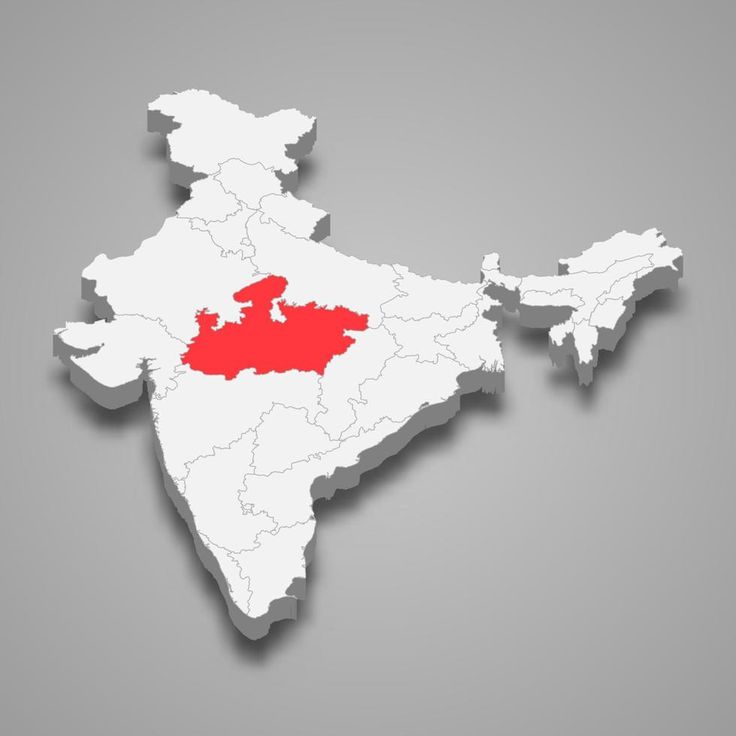Madhya Pradesh: 8 Important Insights into Its Culture, History, and Impact on Society
Introduction
Madhya Pradesh, often referred to as the “Heart of India,” is a state rich in history, culture, and natural beauty. Located in the central part of India, it has played a significant role in the country’s development. With its vibrant cultural heritage, historical monuments, and significant contributions to India’s economy and social fabric, Madhya Pradesh is a state that encapsulates the essence of India’s diverse traditions. In this article, we will explore the history, daily life impacts, and significance of Madhya Pradesh, shedding light on why it is an important state in India.
History of Madhya Pradesh
Madhya Pradesh has a history that spans several millennia, with its roots deeply embedded in ancient Indian civilizations. The region was once home to powerful kingdoms like the Mauryas, Guptas, and the Rashtrakutas, all of which contributed to the cultural and political landscape of India. The famous Ujjain city, one of the ancient capitals of India, was once a major center of learning and culture.
The state has seen the rise and fall of numerous dynasties, including the Mughals and Marathas, both of which have left a lasting influence on its architecture, culture, and traditions. The region also played a pivotal role during India’s freedom struggle, with many notable leaders hailing from Madhya Pradesh, including Rani Durgavati and Laxman Singh.
Post-independence, Madhya Pradesh became a key contributor to India’s growth. The state has since seen significant developments in agriculture, industry, and education, while also preserving its rich heritage of ancient temples, forts, and palaces.
Daily Life and Impacts
The daily life of the people in Madhya Pradesh reflects the state’s diverse cultural influences and agricultural roots. Villages in Madhya Pradesh are primarily agrarian, with wheat, rice, soybean, and lentils being major crops. Cottage industries, such as handicrafts and artisanal weaving, also play an important role in the local economy, especially in regions like Chanderi and Maheshwar, known for their traditional weaving skills.
In urban areas like Bhopal and Indore, life is a blend of modernity and tradition. Bhopal, the capital, is known for its lakes, vibrant markets, and historical architecture, while Indore is a major commercial hub and the cleanest city in India. Both cities are centers of commerce, education, and healthcare, providing ample job opportunities and a growing middle class.
Despite the urban growth, rural areas in Madhya Pradesh continue to rely on agriculture, and the state has made significant strides in the agricultural sector, focusing on irrigation and crop diversification. Government schemes for farmers, including those for irrigation systems and fertilizers, have helped improve crop yields and rural livelihoods.
Key Facts
- Capital: Bhopal, known as the City of Lakes, is the capital and is famous for its natural beauty and cultural heritage.
- Historical Significance: Madhya Pradesh is home to ancient cities like Ujjain, Sanchi, and Khajuraho, which hold religious, historical, and architectural significance.
- Cultural Diversity: The state is home to several ethnic groups, including Adivasis (tribal communities), and is rich in traditions, festivals, and folk arts.
- Famous for Temples and Monuments: The Kandariya Mahadev Temple, Sanchi Stupa, and Khajuraho Temples are UNESCO World Heritage Sites in Madhya Pradesh.
- Wildlife and Nature: Madhya Pradesh boasts several national parks, including Kanha National Park, Bandhavgarh National Park, and Pench National Park, which are famous for their tiger population.
- Economy: The state is a significant producer of soybeans, wheat, rice, and sugarcane. It is also a hub for mineral resources, especially coal and diamonds.
- Festivals: Major festivals include Diwali, Holi, and Makar Sankranti, celebrated with great enthusiasm across the state.
- Educational Reforms: Madhya Pradesh has made strides in education, especially in the rural areas, with government programs that focus on primary education and women’s literacy.
Significance
It holds significant value in India’s overall development. As one of the largest states in India by area, it serves as a vital agriculture-based economy and plays a critical role in food production. The state’s contribution to India’s agriculture, especially in terms of producing soybean and wheat, supports the nation’s food security.
In addition to agriculture, Madhya Pradesh is rich in mineral resources, with extensive deposits of coal, diamonds, and limestone. The state also has a strong industrial base, with a growing presence in automobile manufacturing, electronics, and pharmaceuticals.
It’s wildlife and natural beauty make it a major tourist destination. The Kanha, Pench, and Bandhavgarh National Parks are famous for their rich biodiversity, including Bengal tigers, leopards, and other endangered species. The Khajuraho Temples, known for their intricate carvings and sculptures, are a UNESCO World Heritage Site, drawing tourists from around the globe.
In the realm of education, Madhya Pradesh has made substantial progress in recent years. The state has focused on improving access to quality education in both urban and rural areas, and it has made strides in girl’s education and women’s empowerment. The Madhya Pradesh State Open University and other local universities provide higher education opportunities for students across the state.
Observances and Wishing
It celebrates several important religious and cultural festivals. Some of the most notable include:
- Makar Sankranti: This harvest festival is celebrated with kite flying and bonfires.
- Diwali: The festival of lights is celebrated with great fervor, especially in cities like Bhopal.
- Holi: The festival of colors is marked by vibrant celebrations, especially in rural areas.
- Teej and Karva Chauth: Festivals for women, celebrating love and marital bliss.
- Khajuraho Dance Festival: Held annually, this festival showcases classical dance forms in the backdrop of the famous Khajuraho temples.
Wishing the people of Madhya Pradesh during these festivals is a way of recognizing their rich cultural heritage and deep-rooted traditions. These festivals not only celebrate the state’s cultural richness but also help promote unity and social harmony among people of different backgrounds and communities.
FAQs
- What is Madhya Pradesh known for? Madhya Pradesh is known for its ancient temples, historical monuments, national parks, and significant agricultural output.
- What are some of the top tourist destinations in Madhya Pradesh? Major tourist destinations include the Khajuraho Temples, Sanchi Stupa, Kanha National Park, Bandhavgarh National Park, and Ujjain.
- What is the capital of Madhya Pradesh? The capital of Madhya Pradesh is Bhopal, famous for its lakes, historical sites, and vibrant culture.
- How is the agriculture sector in Madhya Pradesh? It is a major producer of soybeans, wheat, and rice, contributing significantly to India’s agriculture.
- What festivals are celebrated in Madhya Pradesh? Major festivals include Diwali, Holi, Makar Sankranti, and Teej, among others.
Conclusion
Madhya Pradesh is a state that encapsulates the heart of India, with its rich history, cultural diversity, and economic significance. From ancient temples and historical sites to lush national parks and a booming agricultural sector, Madhya Pradesh offers a unique blend of tradition and modernity. The state’s role in India’s growth—especially in agriculture, education, and wildlife conservation—makes it a cornerstone of the country’s development. Its social welfare policies, tourism industry, and progressive approach to education and healthcare ensure that Madhya Pradesh will remain a key player in India’s future for years to come.










